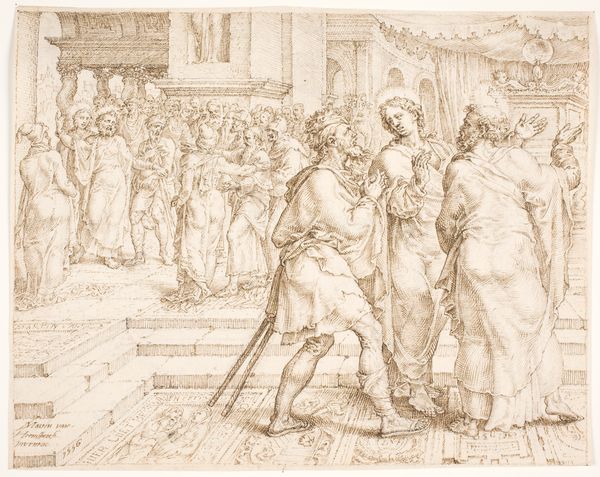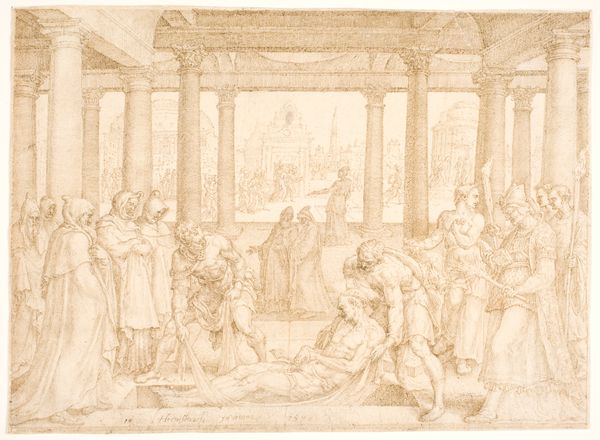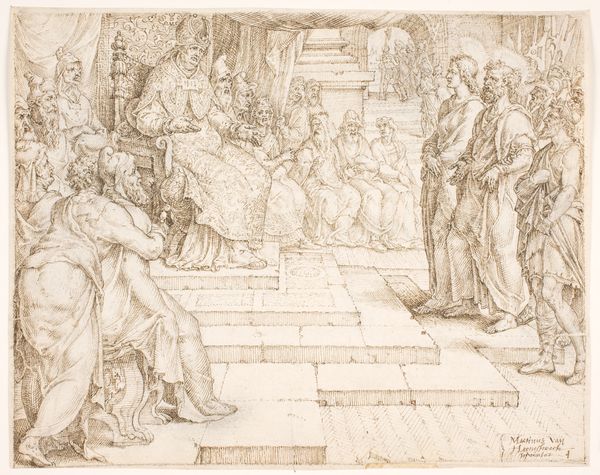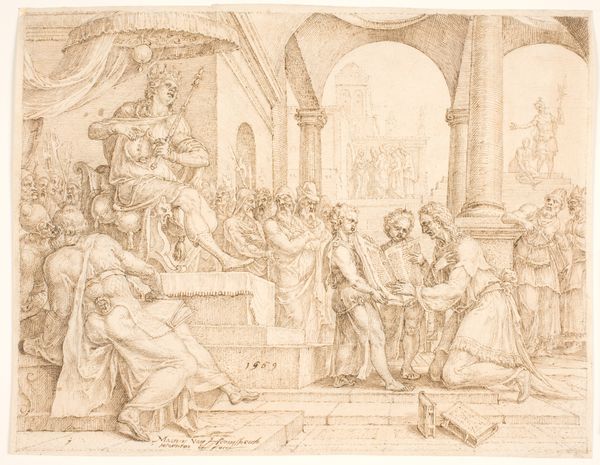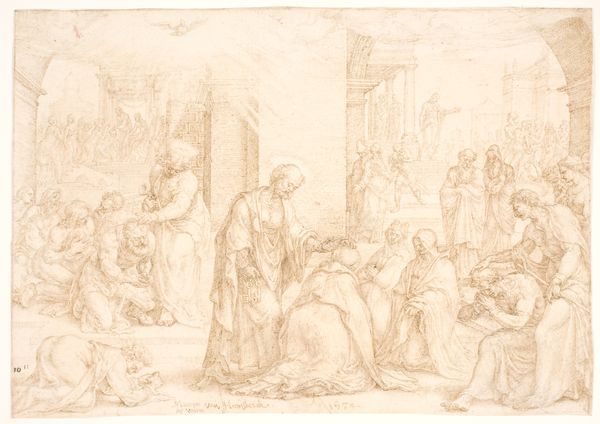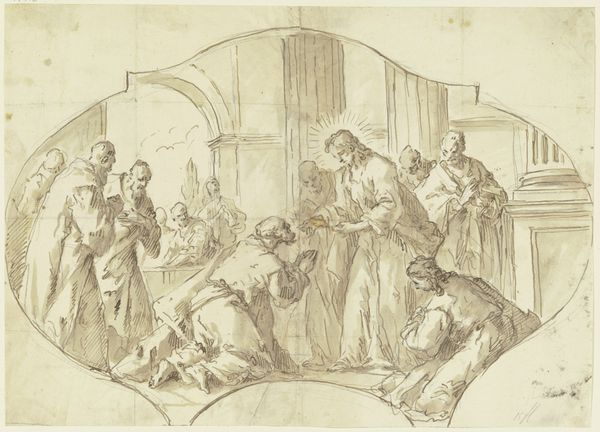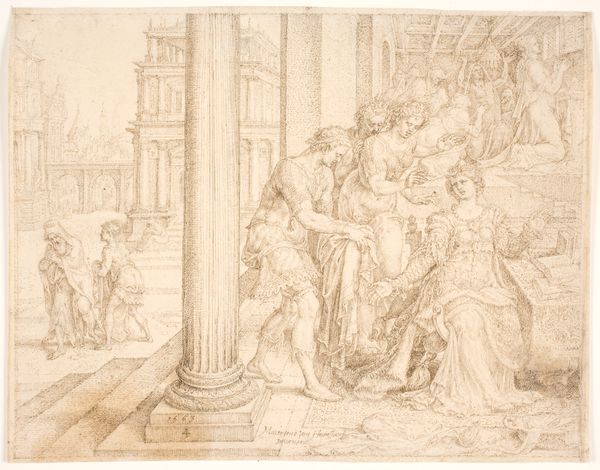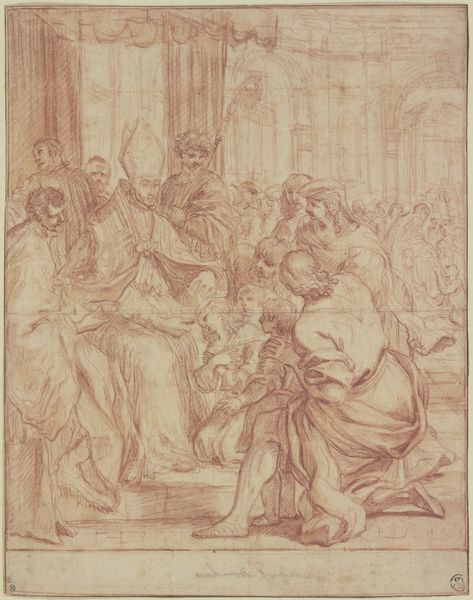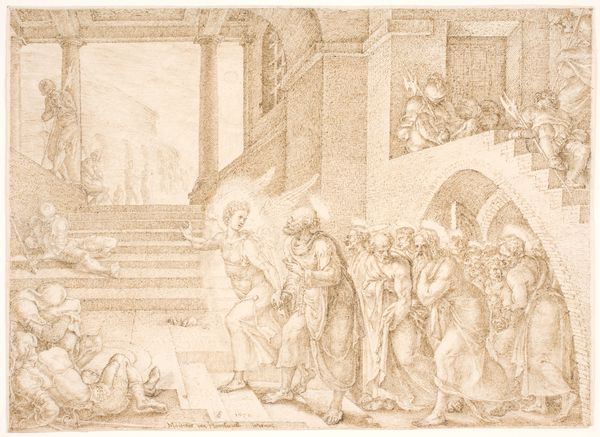
St. Peter and St. John are taken Prisoners by the Priests and Sadducees 1556
0:00
0:00
drawing, print, engraving
#
drawing
# print
#
figuration
#
line
#
genre-painting
#
history-painting
#
academic-art
#
engraving
#
realism
Dimensions: 205 mm (height) x 251 mm (width) (bladmaal)
Curator: This drawing, or rather engraving, is titled "St. Peter and St. John are taken Prisoners by the Priests and Sadducees." Created in 1556 by Maarten van Heemskerck, it’s currently housed in the Statens Museum for Kunst. Editor: The mood is instantly tense. I am drawn to the contrast in the robes. Look at the robes on the left. See how rich and ornate they are and then compare those materials with the humble cloths of those who seek refuge on the right side of the work. Curator: Yes, and observe the organization of space here. Heemskerck masterfully employs line work, a technique that’s quite striking given the scene's complexity. Note how line quality establishes foreground, middle ground, and background, creating both depth and a dynamic narrative flow. The composition seems strategically constructed, doesn't it? Editor: Absolutely, and beyond composition, what interests me is the material story—the human story. Look at the textures the artist creates in these lines: you have heavy fabrics, bare skin. They show such a difference in the subjects' access to resources. This all tells a potent tale about power dynamics within a community and speaks of what it means to control the production, control, and ownership of things. Curator: An interesting consideration. I am stuck by the historical context in how it interacts with linear elements to shape meaning and symbolism, for instance, those vertical lines forming the architecture imbue a sense of authority. And the horizontal lines defining the floor and the steps—those emphasize the precariousness of Peter and John's situation. The linear language crafts the meaning of subjugation. Editor: The artist used specific methods—engraving techniques in this instance to portray the disparity in society. I think about who would have had access to prints like this one at the time. It's an intriguing element, because, in that period, art objects reflected complex issues about artistic license versus cultural responsibility. And so the materials speak about power. Curator: I am more engaged in contemplating its design: Its precise organization of linear patterns yields narrative meaning. It’s all so well structured. Editor: For me, that linear precision also documents the material disparity, which speaks volumes about what it was like to live at that time.
Comments
No comments
Be the first to comment and join the conversation on the ultimate creative platform.

